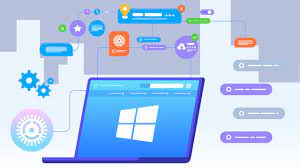Unlocking Business Success: The Power of a CRM System
The Importance of a CRM System
A Customer Relationship Management (CRM) system is a vital tool for businesses looking to manage their interactions with current and potential customers effectively. In today’s competitive market, maintaining strong relationships with customers is essential for business growth and success.
CRM systems help businesses streamline their sales, marketing, and customer service processes by providing a centralised platform to store customer data, track interactions, and manage communication. By having a comprehensive view of each customer’s history and preferences, businesses can tailor their approach and provide personalised experiences that drive customer loyalty.
One key benefit of a CRM system is improved efficiency. By automating repetitive tasks, such as data entry and follow-up reminders, employees can focus their time on more valuable activities like building relationships and closing deals. This increased efficiency leads to higher productivity and better outcomes for the business.
Furthermore, CRM systems enable businesses to analyse customer data and gain valuable insights into their behaviour and preferences. By understanding customer trends and patterns, businesses can make informed decisions about product development, marketing strategies, and sales tactics to better meet the needs of their target audience.
Overall, investing in a CRM system is crucial for businesses looking to stay competitive in today’s fast-paced market. By centralising customer data, improving efficiency, and gaining valuable insights, businesses can build stronger relationships with customers, drive sales growth, and ultimately achieve long-term success.
Top 5 Tips for Optimising Your CRM System for Business Success
- Ensure all customer data is accurate and up-to-date in the CRM system.
- Regularly train employees on how to effectively use the CRM system for maximum efficiency.
- Customise the CRM system to suit your specific business needs and processes.
- Integrate the CRM system with other tools and software for seamless data flow and improved productivity.
- Monitor key performance indicators within the CRM system to track customer interactions and measure success.
Ensure all customer data is accurate and up-to-date in the CRM system.
It is essential to ensure that all customer data is accurate and up-to-date in the CRM system. By maintaining precise information about customers, businesses can effectively personalise their interactions, anticipate needs, and provide tailored solutions. Accurate data also enables businesses to make informed decisions based on real-time insights, leading to improved customer satisfaction and loyalty. Regularly updating and verifying customer data in the CRM system ensures that businesses have a reliable foundation for building strong relationships and driving success.
Regularly train employees on how to effectively use the CRM system for maximum efficiency.
To maximise the efficiency and effectiveness of a CRM system, it is essential to regularly train employees on how to utilise the system effectively. By providing ongoing training and support, employees can fully understand the capabilities of the CRM system and learn how to leverage its features to streamline processes, improve customer interactions, and drive business growth. Continuous training ensures that employees are equipped with the knowledge and skills needed to make the most out of the CRM system, ultimately leading to enhanced productivity, better customer relationships, and overall success for the business.
Customise the CRM system to suit your specific business needs and processes.
Customising your CRM system to align with your specific business needs and processes is a crucial tip for maximising the effectiveness of your customer relationship management strategy. By tailoring the system to accommodate the unique requirements of your business, you can ensure seamless integration with existing workflows and operations, leading to improved efficiency and productivity. Customisation allows you to capture relevant data points, automate key processes, and generate meaningful insights that are directly relevant to your business goals. Embracing this tip empowers you to leverage the full potential of your CRM system and enhance your ability to deliver personalised experiences that drive customer satisfaction and loyalty.
Integrate the CRM system with other tools and software for seamless data flow and improved productivity.
Integrating the CRM system with other tools and software is a valuable tip that can significantly enhance productivity and streamline operations. By ensuring seamless data flow between different platforms, businesses can eliminate silos of information and create a unified view of customer interactions. This integration not only saves time on manual data entry but also allows for more informed decision-making by consolidating data from various sources. Ultimately, integrating the CRM system with other tools leads to improved efficiency, better collaboration among teams, and a more holistic approach to customer relationship management.
Monitor key performance indicators within the CRM system to track customer interactions and measure success.
Monitoring key performance indicators within the CRM system is essential for businesses to effectively track customer interactions and measure success. By keeping a close eye on metrics such as customer engagement, conversion rates, and customer satisfaction scores, businesses can gain valuable insights into the effectiveness of their strategies and initiatives. This data allows businesses to make informed decisions, identify areas for improvement, and ultimately enhance their overall performance in managing customer relationships.









